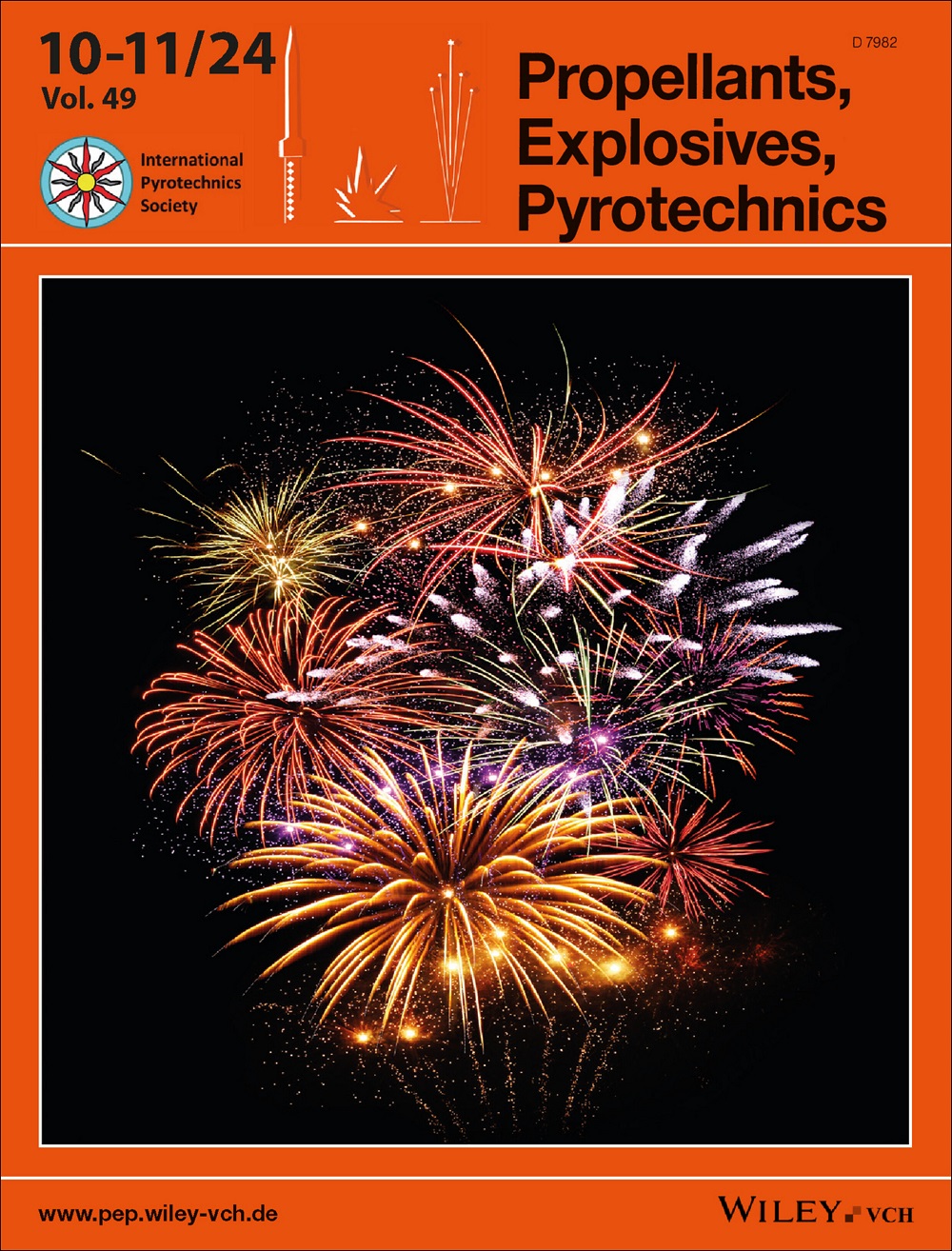Improved method for prediction of detonation velocity for C−H−N−O based pure, mixed and aluminized explosives
IF 2
4区 工程技术
Q3 CHEMISTRY, APPLIED
引用次数: 0
Abstract
An improved method is presented for the prediction of detonation velocity of C−H−NO based pure, mixed, and aluminized explosives. The new empirical relation is based on calculated values of the heat of detonation and the number of moles of gaseous detonation products. A constant of the empirical relation has been found using regression analysis of 74 data points of pure and mixed explosives as well as 22 data points of aluminized explosives. The value of the constant is found to be 1.00 with基于 C-H-N-O 的纯炸药、混合炸药和铝化炸药爆炸速度的改进预测方法
提出了一种改进的方法,用于预测以 C-H-NO 为基础的纯炸药、混合炸药和铝化炸药的爆速。新的经验关系是基于起爆热的计算值和气态起爆产物的摩尔数。通过对纯炸药和混合炸药的 74 个数据点以及镀铝炸药的 22 个数据点进行回归分析,找到了经验关系的常数。常数值为 1.00,R2 值为 0.96。通过比较 TNT、HMX/RDX-TNT-Al 和 HMX-TNT 类炸药的爆炸速度预测值和测量值,验证了提出的经验关系。采用针电离法对直径 50 毫米、高 150 毫米的圆柱形炸药进行了爆速实验测量。爆炸速度的预测值与测量值十分吻合,均方根误差为 1.28%。还通过比较使用现有方法和文献方法计算的爆速值与报告的实验值,验证了新的关系。
本文章由计算机程序翻译,如有差异,请以英文原文为准。
求助全文
约1分钟内获得全文
求助全文
来源期刊

Propellants, Explosives, Pyrotechnics
工程技术-工程:化工
CiteScore
4.20
自引率
16.70%
发文量
235
审稿时长
2.7 months
期刊介绍:
Propellants, Explosives, Pyrotechnics (PEP) is an international, peer-reviewed journal containing Full Papers, Short Communications, critical Reviews, as well as details of forthcoming meetings and book reviews concerned with the research, development and production in relation to propellants, explosives, and pyrotechnics for all applications. Being the official journal of the International Pyrotechnics Society, PEP is a vital medium and the state-of-the-art forum for the exchange of science and technology in energetic materials. PEP is published 12 times a year.
PEP is devoted to advancing the science, technology and engineering elements in the storage and manipulation of chemical energy, specifically in propellants, explosives and pyrotechnics. Articles should provide scientific context, articulate impact, and be generally applicable to the energetic materials and wider scientific community. PEP is not a defense journal and does not feature the weaponization of materials and related systems or include information that would aid in the development or utilization of improvised explosive systems, e.g., synthesis routes to terrorist explosives.
 求助内容:
求助内容: 应助结果提醒方式:
应助结果提醒方式:


